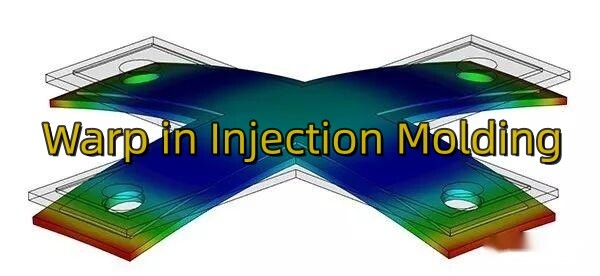Email format error
Email cannot be empty
Email already exists
6-20 characters(letters plus numbers only)
The password is inconsistent
Email format error
Email cannot be empty
Email does not exist
6-20 characters(letters plus numbers only)
The password is inconsistent

Offer Technical Support and Customized Solutions
The company is committed to creating new and improved plastic materials to meet the evolving demands of the market.

Injection Molding Blog: Understanding and Addressing Warping Defects
Introduction:
Warping, or deformation, is a common defect in injection molded products where the shape deviates from the intended mold cavity structure. It arises from several factors, including mold design, thermal properties of plastic materials, and process conditions during injection molding. In this blog post, we will analyze the causes of warping defects and explore potential remedies.
1️⃣ Mold Defects:
During mold design, it's crucial to position the gate appropriately to ensure uniform plastic flow and avoid direct impact on the core. A well-designed gating system helps maintain parallel flow of molten material while ensuring even distribution of forces on the core.
Improper mold release systems can cause significant warping. If the part experiences imbalanced external forces during demolding, it can lead to substantial structural deformation.
Inadequate cooling system design can result in insufficient or uneven cooling of the part, leading to inconsistent shrinkage and subsequent warping. Therefore, balancing cooling in different sections of the mold is essential.
2️⃣ Improper Process Conditions:
Various process parameters can contribute to warping defects, including slow injection speeds, low injection pressures, insufficient holding and injection times under non-excessive filling conditions, inadequate cooling and solidification times, uneven melt plasticization, excessive material drying temperatures, and improper annealing treatments. Adjusting the corresponding process parameters according to specific situations is necessary to minimize warping defects.
3️⃣ Inappropriate Material Characteristics:
Imbalanced molecular orientation is a significant factor causing warping in thermoplastic materials. The difference between radial and tangential shrinkage is a result of molecular orientation. Typically, during the molding process, the molecular orientation along the melt flow direction is higher than in the perpendicular direction. As a result of uneven shrinkage in two orthogonal directions, the part inevitably experiences warping deformation.
✅Conclusion:
Warping defects in injection molding can be addressed through a combination of proper mold design, optimal process conditions, and careful material selection. Analyzing and troubleshooting each contributing factor will help minimize warping and ensure the production of high-quality plastic components.
Note: This blog provides a general overview of warping defects in injection molding. It's always advisable to consult with experts and conduct specific tests to address particular warping issues in your manufacturing process.
https://www.toponew.com/products

